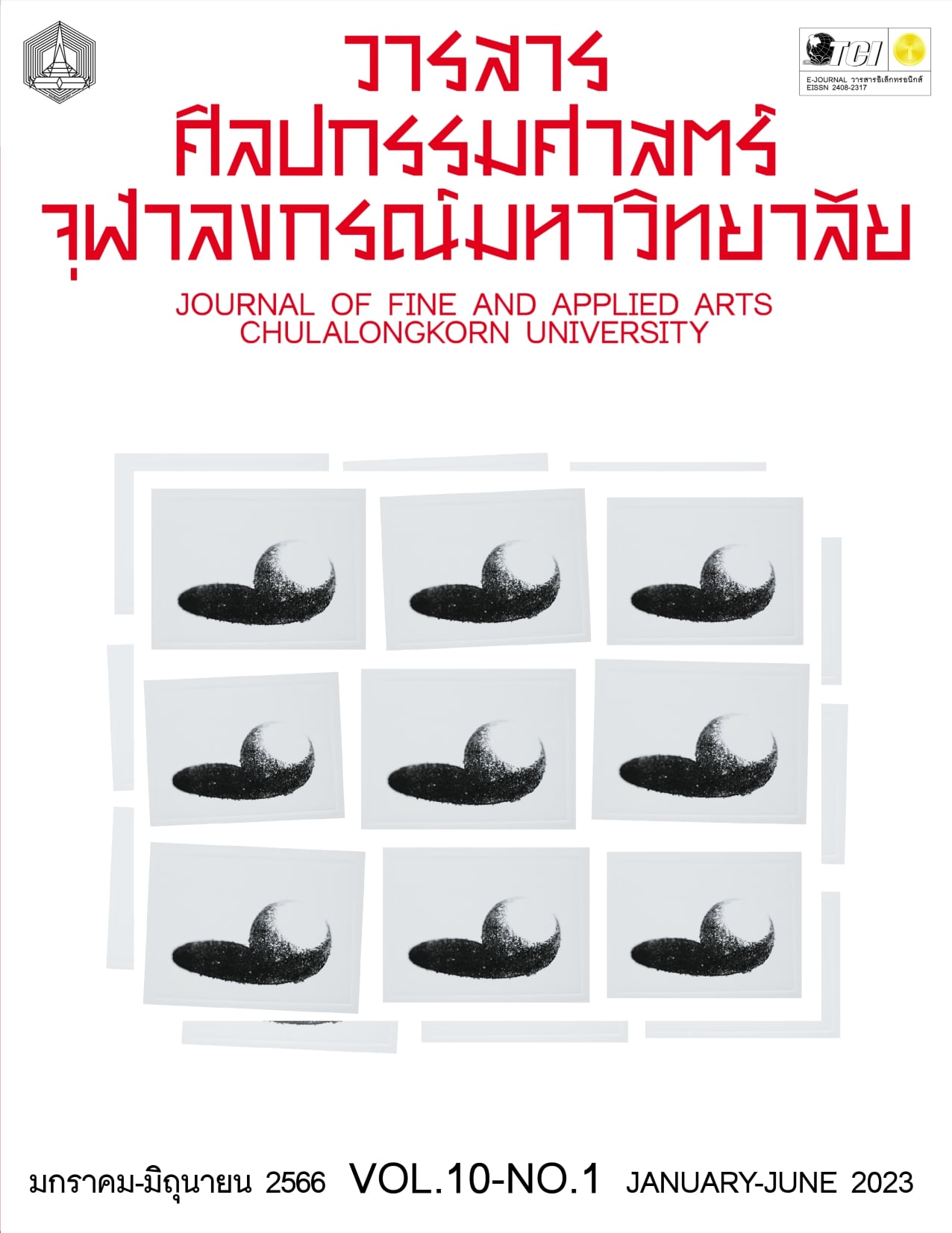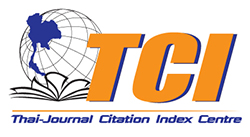GUIDELINES FOR CREATING MUSIC FOR OCCUPATIONAL THERAPY
Keywords:
Music Therapy, Music Creation, Music Development, Creative Guidelines, Music Therapy MethodsAbstract
Music therapy activities are increasingly popular in modern times by many groups of medical professionals, social development groups and educators. Music has played an important role in development through various forms of activity, including singing, playing musical instruments, rhythmic movements, as well as listening and creative thinking for occupational therapy. Studies of past studies and scientific evidence have clearly shown that the structure and composition of music have unique characteristics of sound waves that can affect the activation of coordination in the human body. It also has a profound connection to emotional and psychological states. In addition, the music used in these activities has not been clearly categorized into the nature of the music used. Most of them have been developed or used according to the aptitude and expertise of the user. Therefore, this article was presented to study the effects of music used in occupational therapy in various dimensions in order to know guidelines or methods for classifying the characteristics of music used in occupational therapy in each activity. These were analyzed and summarized as guidelines for creating music for music therapy activities These were analyzed and summarized as guidelines for creating music for music therapy activities. Two main grouping models were formed, namely acoustic music and music technology presented in connection with the main musical structure or components in various dimensions such as melody, rhythm, harmony, tone color and musical form, and so on. The findings would be useful in promoting the development of music for occupational therapy including being used in conjunction with educational and medical processes in the future.
References
Akimoto, Kaho, Ailing Hu, Takuji Yamaguchi and Hiroyuki Kobayashi. “Effect of 528 Hz Music on the Endocrine System and Autonomic Nervous System.” Harmonia: Journal of Arts Research and Education 21, no. 1 (September 2018): 37-47.
Bernardi, Luciano, C. Porta and P. Sleight. “Cardiovascular, cerebrovascular, and respiratory changes induced by different types of music in musicians and non-musicians: the importance of silence.” Heart 92, no. 4 (2006): 445-452.
Better Sleep. “The Science Behind Solfeggio Frequencies.” https://www.bettersleep.com/blog/science-behind-solfeggio-frequencies/.
Binaural Beats Freak. “Solfeggio Frequencies: A Complete Guide to the Ancient Scale.” https://www.binauralbeatsfreak.com/sound-therapy/solfeggio-frequencies-guide.
Bruscia, E. Kenneth. “The Nature of Meaning in Music Therapy.” Nordic Journal of Music Therapy 9, no. 4 (2000): 1-21.
Calamassi, Diletta and Gian Paolo Pomponi. “Music Tuned to 440 Hz Versus 432 Hz and the Health Effects: A Double-blind Cross-over Pilot Study.” EXPLORE: The Journal of Science & Healing 15, no. 4 (July-August 2019): 283-290.
Charoenrat, Chinnapat and Narongrit Dhamabutra. “Music Composition: “Trilaksana” for Orchestra.” Journal of Fine and Applied Arts Chulalongkorn University 8, no. 2 (July-December 2021): 71-80.
ชินภัทร เจริญรัตน์ และ ณรงค์ฤทธิ์ ธรรมบุตร. “บทประพันธ์เพลง: “ไตรลักษณ์” สำหรับออร์เคสตรา.” วารสารศิลปกรรมศาสตร์ จุฬาลงกรณ์มหาวิทยาลัย ปีที่ 8, ฉบับที่ 2 (กรกฎาคม-ธันวาคม): 71-80.
Chawawisuttikoon, Thanach and Weerachat Premananda. “Doctoral Music Conducting: The Symphonic Musical Legacy for Contemporary Winds.” Journal of Fine and Applied Arts Chulalongkorn University 9, no. 1 (January-June 2022): 143-154.
ธนัช ชววิสุทธิกูล และ วีรชาติ เปรมานนท์. “ดุษฎีนิพนธ์การวาทยกร : วรรณกรรมดนตรีสำหรับวงเครื่องลมร่วมสมัย.” วารสารศิลปกรรมศาสตร์ จุฬาลงกรณ์มหาวิทยาลัย ปีที่ 9, ฉบับที่ 1 (มกราคม-มิถุนายน 2565): 143-154.
Chiasson, Ann Marie, Ann Linda Baldwin, Carrol Mclaughlin, Paula Cook and Gulshan Sethi. “The Effect of Live Spontaneous Harp Music on Patients in the Intensive Care Uni.” Evidence-Based Complementary and Alternative Medicine (2013): 1-6.
Chowdhury, Madhuleena Roy. “15 Music Therapy Activities and Tools.” https://positivepsychology.com/music-therapy-activities-tools/.
Hegde, Shantala. “Music therapy for mental disorder and mental health: the untapped potential of Indian classical music.” BJPSYCH INTERNATIONAL 14, no. 2 (May 2017): 31-33.
Jiemsak, Ruamsak. “Music therapy: the development of autistic children in language usage for communication.” Patanasilpa Journal 2, Supplement (June 2018): 71-80.
รวมศักดิ์ เจียมศักดิ์. “ดนตรีบำบัด : การพัฒนาเด็กออทิสติกทางด้านการใช้ภาษาเพื่อการสื่อสาร.” วารสารพัฒนศิลป์วิชาการ ปีที่ 2, ฉบับพิเศษ (มิถุนายน 2561): 71-80.
Jirakittayakorn, Nantawachara and Yodchanan Wongsawat. “Brain Responses to a 6-Hz Binaural Beat: Effects on General Theta Rhythm and Frontal Midline Theta Activity.” Frontiers in Neuroscience 11, article 365 (2017): 1-11.
Jones, Douglas L. and Catherine Schmidt-Jones. Frequency and Music. Houston: Connexions, 2020.
Jurvanen, Kalle. “Binaural beats and music: using Theta and Alpha waves in music to induce relaxation and meditation.” Master Thesis, Aalto University, 2020.
Kaewsai, Chutiwan and Benjawan Runseawa. Handbook of music therapy in children with developmental and intellectual disabilities for staffs. Bangkok: Beyond Publishing CO., 2011.
Kitila, Supaphorn. “The Model Development of Using Music Therapy in Rehabilitation for People with Disability and Elderly: Lesson Learned.” Journal of the Department of Medical Services 42, no. 6 (November-December 2017): 74-80.
สุภาพร กิติหล้า. “การพัฒนารูปแบบการใช้ดนตรีบำบัดเพื่อการฟื้นฟูสมรรถภาพคนพิการ เด็ก/ผู้ใหญ่ และผู้สูงอายุ : การถอดบทเรียน.” วารสารกรมการแพทย์ ปีที่ 42, ฉบับที่ 6 (พฤศจิกายน-ธันวาคม 2560): 74-80.
Klaphajone, Jakkrit. “Music Therapy.” https://w1.med.cmu.ac.th/rehab/index.php?option=com_content&view=article&id=81&catid=13&lang=th.
Klaphajone, Jakkrit. Music Therapy: Neurologic Music Therapy. Chiang Mai: Department of Rehabilitation Medicine, Faculty of Medicine, Chiang Mai University, 2009.
Li, Dong. “Music Therapy in Mental Health and Emotional Diversion of Primary and Secondary School Students.” Hindawi Occupational Therapy International (2022): 1-12.
Make Therapy Musical. “Part I: Composition in Music Therapy.” https://www.maketherapymusical.com/cmte-pcci-part-i.
Mindful Media. “A Beginner’s Guide to Binaural Beats.” https://www.binauralbeatsmeditation.com/beginners-guide-binaural-beats/.
Nikom, Orranid and Piyanuch Promsaka Na Sakolnakorn. “Using Music to Reduce Anxiety in Labor.” Hua Hin Medical Journal 1, no. 1 (January-April 2021): 1-13.
อรนิด นิคม และ ปิยะนุช พรหมสาขา ณ สกลนคร. “การใช้ดนตรีลดความวิตกกังวลในระยะคลอด.” หัวหินเวชสาร ปีที่ 1, ฉบับที่ 1 (มกราคม-เมษายน 2564): 1-13.
Perfect Perch. “Human Brainwaves.” https://theperfectperch.com/blogs/news/be-like-einstein.
Permsuk, Atiaya, Suchada Kornpetpanee and Yoottana Janthakhin. “The Effects of Visualizing Valence Picture and Listening to Classical Thai Music Inserting Binaural Beats on the First Stage of Labor Pain and Vital Signs of Primigravidarum.” Research Methodology & Cognitive Science 16, no. 1 (January-June 2018): 26-40.
อาทิตยา เพิ่มสุข, สุชาดา กรเพชรปาณี และ ยุทธนา จันทะขิน. “ผลของโปรแกรมการดูภาพที่ประทับใจร่วมกับการฟังเสียงดนตรีไทยเดิมที่แทรกสอดคลื่นเสียง ไบนอราลบีตส์ต่ออาการปวดและสัญญาณชีพ ในระยะที่ 1 ของการคลอดของผู้คลอดครรภ์แรก.” วารสารวิทยาการวิจัยและวิทยาการปัญญา ปีที่ 16, ฉบับที่ 1 (มกราคม-มิถุนายน 2561): 26-40.
Piriyapongrat, Paradee. “A Study of Effect of Music Therapy for Reducing Stress of Health Sciences Program Students at a Private University.” Christian University Journal 20, no. 2 (April-June 2014): 273-288.
ภารดี พิริยะพงษ์รัตน์. “การศึกษาผลของการใช้ดนตรีบำบัดเพื่อลดความเครียดของนักศึกษา สาขาวิชาชีพด้านสุขภาพในมหาวิทยาลัยเอกชนแห่งหนึ่ง.” วารสารมหาวิทยาลัยคริสเตียน ปีที่ 20, ฉบับที่ 2 (เมษายน-มิถุนายน): 273-288.
Ruud, Even. “Music in Therapy: Increasing Possibilities for Action.” Music and Arts in Action 1, no.1 (June 2008): 46-60.
Suntornvijitr, Sarawalee. “Music Therapy: An alternative Treatment for Persons with Depression.” Social
Sciences Research and Academic Journal 12, no. 36 (September-December 2017): 1-12.
สราวลี สุนทรวิจิตร. “ดนตรีบำบัด : การบำบัดทางเลือกสำหรับบุคคลที่มีภาวะซึมเศร้า.” วารสารวิชาการและวิจัยสังคมศาสตร์ ปีที่ 12, ฉบับที่ 36 (กันยายน-ธันวาคม 2560): 1-12.
Summer, Lisa. “Special Feature Considering Classical Music for Use in Psychiatric Music Therapy.” Music Therapy Perspectives 12, no. 2 (January 1994): 130-133.
Trakulhun, Wiboon. “The influence of Olivier Messiaen’s Music on ether-cosmos IX and X.” Journal of Fine and Applied Arts Chulalongkorn University 5, no. 1 (March-June 2018): 113-123.
วิบูลย์ ตระกูลฮุ้น. “อิทธิพลดนตรีของโอลิเวียร์ เมสเซียน ในบทประพันธ์เพลง มิติแห่งอากาศธาตุหมายเลข 9 และ 10.” วารสารศิลปกรรมศาสตร์ จุฬาลงกรณ์มหาวิทยาลัย ปีที่ 5, ฉบับที่ 1 (มีนาคม-มิถุนายน 2561): 113-123.
Trichavaroj, Pimrapee and Weerachat Premananda. “Master Music Composition: The Matrix Soundscape Utopia for Chamber Ensembles.” Rangsit Music Journal 17, no. 2 (July-December 2022): 61-76.
พิมพ์รพี ไตรชวโรจน์ และ วีรชาติ เปรมานนท์. “บทประพันธ์เพลงระดับมหาบัณฑิต: “คีตคณิตแห่งห้วงเสียงยูโทเปีย” สำหรับวงเชมเบอร์อองซอมเบลอ.” วารสารดนตรีรังสิต ปีที่ 17, ฉบับที่ 2 (กรกฎาคม-ธันวาคม 2565): 61-76.
Tunboot, Teerawat. “An Analysis of Jazz Composition: Waltz for Nile.” Rangsit Music Journal 17, no. 1 (January-June 2022): 74-87.
ตันบุตร ธีรวัฒน์. “การวิเคราะห์บทประพันธ์เพลงแจ๊ส: วอลซ์ฟอร์ไนล์.” วารสารดนตรีรังสิต ปีที่ 17, ฉบับที่ 1 (มกราคม-มิถุนายน 2565):74-87.
Downloads
Published
Issue
Section
License
Copyright (c) 2023 AMORNMAS MOOKDAMUANG, NARATHON YUENYUNG

This work is licensed under a Creative Commons Attribution-NonCommercial-NoDerivatives 4.0 International License.
ลิขสิทธิ์ของบทความเป็นของเจ้าของบทความ บทความที่ได้รับการตีพิมพ์ถือเป็นทัศนะของผู้เขียน
กองบรรณาธิการไม่จำเป็นต้องเห็นด้วยและไม่รับผิดชอบต่อบทความนั้น






